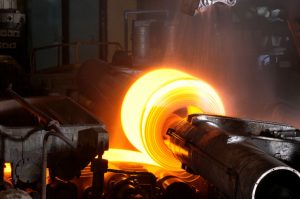U.S. steel capacity utilization for week ending Sept. 19 dips to 64.5%
The steel capacity utilization rate in the U.S. for the week ending Sept. 19 fell to 64.5%.
See why technical analysis is a superior forecasting methodology over fundamental analysis and why it matters for your steel buy.
Steel capacity utilization rate for week ending Sept. 19 drops
The steel capacity utilization rate for the week ending Sept. 19 marked a slight decline from the previous week, when it reached 65.1%, according to the American Iron and Steel Institute (AISI).
U.S. mills churned out 1.45 million net tons of steel during the week, down 19.7% on a year-over-year basis. The capacity utilization rate during the same week in 2019 stood at 77.4%.
Furthermore, production during the week marked a slight decline from the previous week, when production totaled 1.46 million net tons.
YTD output down 20.1%
In addition to the capacity utilization rate, adjusted year-to-date production reached 56.2 million net tons.
Steel mills’ capacity utilization rate reached 65.8% during the aforementioned period.
Meanwhile, for the same time frame in 2019, production totaled 70.3 million net tons at a capacity utilization rate of 80.3%.
Regional output
By region, production for the week ending Sept. 19, 2020, totaled:
- Northeast: 135,000 net tons
- Great Lakes: 527,000 net tons
- Midwest: 169,000 net tons
- Southern: 553,000 net tons
- Western: 62,000 net tons
Capacity utilization down, but steel prices make gains
On the price front, U.S. steel prices have showed significant upward momentum in recent weeks.
The U.S. HDG price closed Monday at $804 per short ton, up 11.98% month over month.
Meanwhile, U.S. CRC closed Monday at $729 per short ton, up 11.47% month over month.
U.S. HRC also made significant gains. The HRC price closed Monday at $560 per short ton, or up 19.4%.
Although capacity utilization has been rising on the whole in recent months, the automotive sector’s recovery has, in part, supported steel prices.
“The recovery of the U.S. auto industry might be driving the steel price increases,” Maria Rosa Gobitz wrote in last week Raw Steels MMI report.
“U.S. auto production continued to improve. Producers such as General Motors, Ford and Fiat Chrysler ramped up their assembly plants.
“However, supply has not quite caught up with demand. As such, U.S. auto inventory continues to tighten.”
Are you prepared for your annual steel contract negotiations? Be sure to check out our five best practices.



Leave a Reply